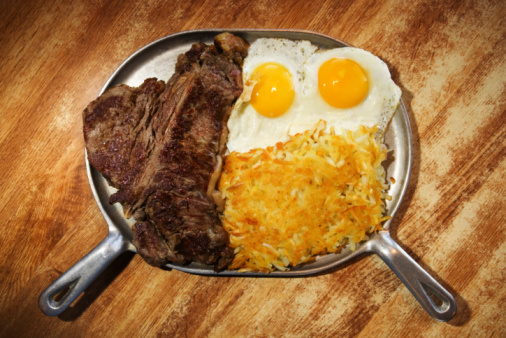I have been informed that for Father’s Day this year, I am allowed to choose what breakfast to be served. My choices are English, or American:



I know: First World Problems.

I have been informed that for Father’s Day this year, I am allowed to choose what breakfast to be served. My choices are English, or American:



I know: First World Problems.
Under First World Problems, add this situation to the list:
GREGGS fans say they’re “heartbroken” as the bakery chain has reopened today but with a limited menu that doesn’t include favourites such as corned beef bakes. Others can’t believe Belgian buns are off the menu, as are regional delicacies including stotties.
For those just coming into this here corner of the Intarwebz (i.e. my back porch), some explanation of a personal nature may be necessary.
Greggs is the premier fast-food chain in Britishland (much bigger than McDonalds), and my home away from home. Every time I fly into Heathrow, I jump on the train to London (unless Mr. Free Market has sent Baillie the chauffeur to pick me up), and get off at Earl’s Court. Literally across the street from the station entrance is a Greggs, and I sit there, suitcases and all, and enjoy a sausage roll and cup of tea. Only then do I feel strong enough to go to the hotel or whatever.

This applies when I’ve had a morning arrival, of course; evening flights will find me doing the same, only at The Blackbird, a block down, where the sausage roll and tea are replaced by fish & chips and a pint of Fuller’s London Pride, respectively.

Getting back to the original topic: I see that the “reduced” menu mercifully includes my favorites, the aforementioned sausage rolls, and my other, the steak bake pie. So I’m alright, Jack.
That said, I quite understand the frustration that others may feel to find their favorites MIA from the menu. Were that to happen to me, well… I don’t want to say I’d go full jihad on Greggs with bombs etc.; but there could well be murders.
Now that the dust has settled, I can report one observation from World Gin Day:
After a certain consumption level of gin, your keyboard turns to liquid.
At least, that’s how it felt to me. Your mileage may vary.

I forgot to mention earlier that tomorrow, June 13, is World Gin Day.
I’ll need an extra bottle or two of Sipsmith, methinks, so it’s off to Ye Olde Liqueure Shoppe I go.





In this case, I’m not talking about government bloat, but my own. This fucking pointless lockdown caused by the Chinkvirus has quite enfattened me, not so much because of what I’ve been eating — okay, not that much — but because our gym has been closed for the past three months by our timorous apartment management.
I hate strolling, unless to a pub — but as the pubs have been closed as well, even that has been denied me. AND we’re starting to approach the annual Texas Broil a.k.a. summer, so the desire to walk outside is lessened yet more. Which means that New Wife has put her foot down and decreed that we will now be entering a period of No Sugar And Only Healthy Foods. Fuck.
My coffee tastes like hot, rancid bilgewater and I can only imagine what weeks of salads and such are going to do to my already-tenuous control of my temper. And I know, I know:

Me too.
I think I’ll just have to spend a lot more time at the range. Which reminds me, I need to lay in a little more ammo, because reasons.
This article got me thinking — or rather, its title did:
Rules for a deconfinement dinner party
I thought about it for a while (about 30 seconds), and came up with Kim’s Rules For A Post-Lockdown Party:
And that’s it. Good food, lots of booze and good company, all seated together round the dinner table at the proper social distance (12″-18″ apart), and have at it.
Of course, those are my ingredients for any decent dinner party, but let’s not get all bogged down with details.